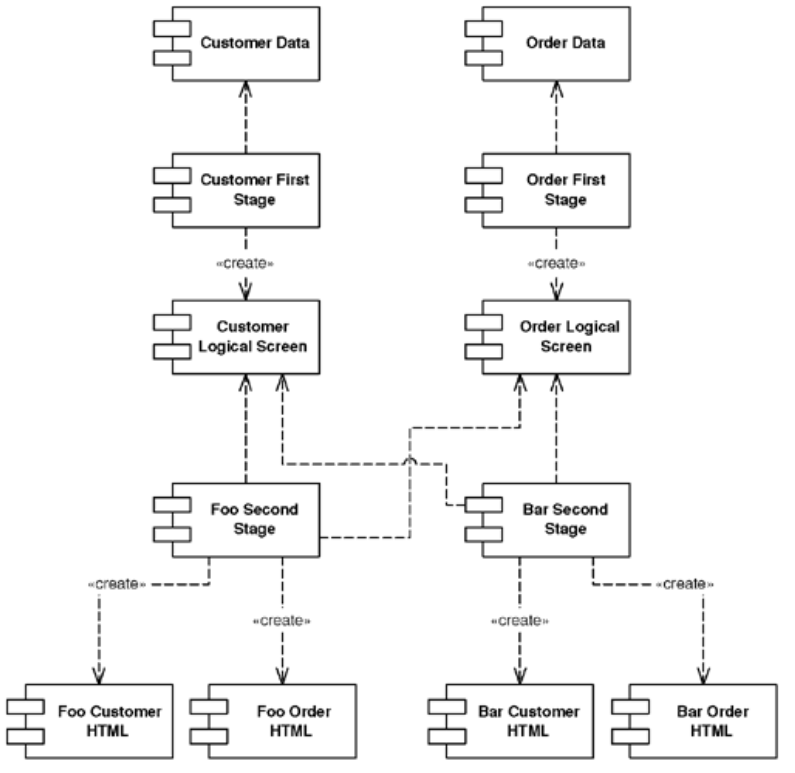Two Step View
Turns domain data into HTML in two steps: first by forming some kind of logical page, then rendering the logical page into HTML.
- Overview
- How It Works
- When to Use It
Overview

You often want a consistent look and organization to the site. You may also want to make global changes to the appearence of the site easily, but common approaches using Template View or Transform View make this difficult because presentation decisions are often duplicated across multiple pages or transform modules.
Two Step View deals with this problem by splitting the transformation into two stages:
-
Transform the model data into a logical presentation without any specific formatting.
-
Convert the logical presentation with the actual formatting needed.
This way you can make a global change by altering the second stage, or you can support multiple output looks and feels with one second stage each.
How It Works
-
The key to this pattern is in making the transformation to HTML a two-stage process.
-
Assemble the information in a logical screen structure that is suggestive of the display elements yet contains no HTML.
-
Transform the presntation-oriented structure and render it into HTML.
-
-
The intermediate form is a kind of logical screen. Its element might include things like fields, headers, footers, tables, choices, and the like.




When to Use It
-
You want to make global changes to formatting easily.
- You want to support multiple formatting for your application (multiappearance) and have similar shared formatting.
- A design-heavy site, where each page is supposed to look different, won’t work well with Two Step View because it’s hard to find enough commonality between the screens to get a simple enough presentation-oriented structure.
- Programmers have to be involved in any design change, and it’s a harder programming model with more boilerplate than a single-staged view.